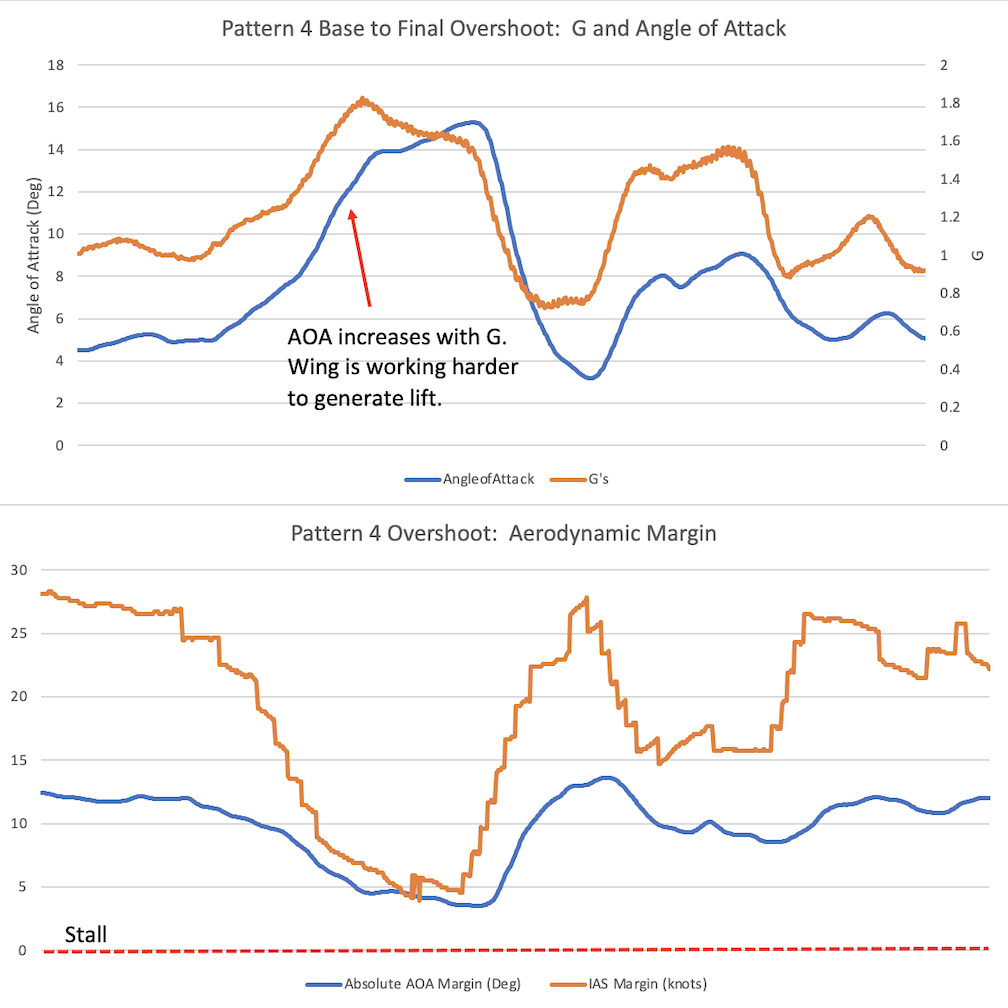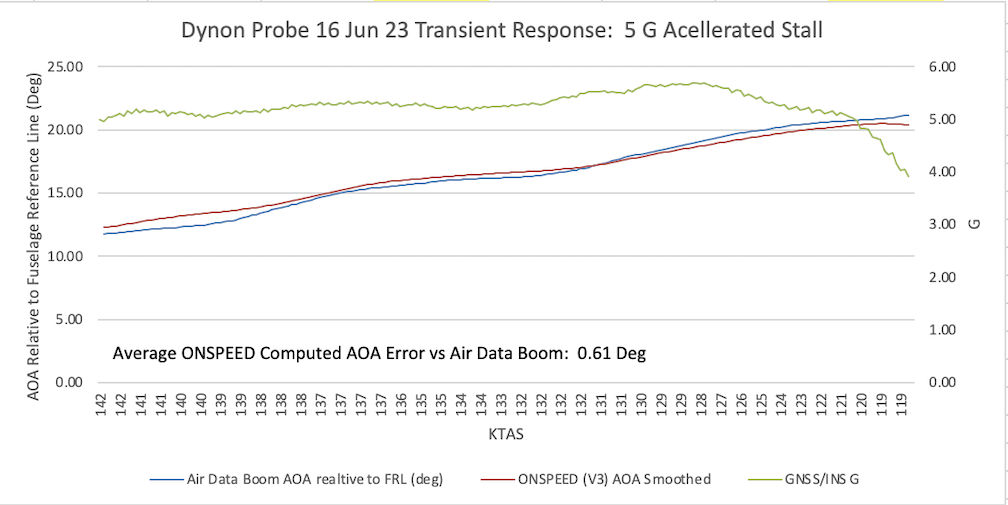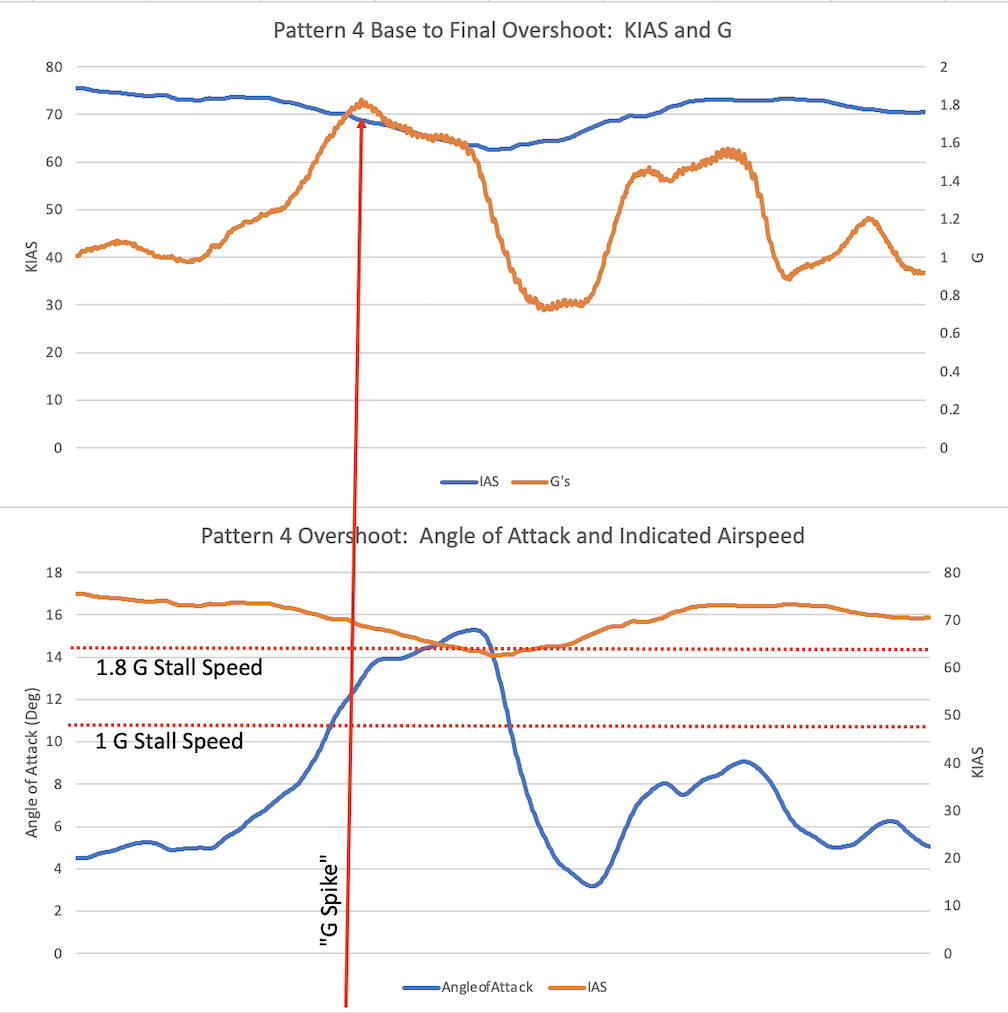Thanks Navy!
Yup, the airplane stalls just fine at 5+ G’s:
https://youtu.be/aANG3-9JcOw
What happens when you overshoot final? Of course, the answer is “it depends…” in this case, on how hard the pilot pulls. AOA increases directly with G. If you “G the airplane up,” you “spike the AOA” and eat into any margin you have. If there is any skid input (rudder in direction of turn and opposite aileron to “keep the bank from getting too steep”) and you accidently spike the AOA too far (i.e., exceed the critical angle of attack), the inside wing quits flying, now:
https://youtu.be/cLg_LGjpL9Q. If, however, the rudder is coordinated, then the airplane simply stalls:
https://youtu.be/BPD5xk1wgOw which you can recover from, even at low altitude by reducing angle of attack. Ed is correct to point out that things get visually interesting when you operate near the ground. We spent a lot of time in the military training pilots to safely operate at low altitude. Although a forum discussion is helpful, he’s also spot on that you should receive training in how to over-shoot if you haven’t had that experience. Regardless the basic rule applies: if in doubt, go around! If your technique for executing that decision matrix is a maximum bank angle and minimum airspeed based on G load, that’ll work too

. Listening to AOA just makes it easy for knuckle-draggers like me.
So, what happens with an overshoot occurs? Again, it depends. If the airplane is unloaded (i.e., G is reduced), turn rate will decrease, but stall margin will be increased. If the airplane is loaded (i.e., G is increased), turn rate will increase and stall margin will be reduced. Let’s look at the later case. I picked the 4th pattern in the video in post #42 (5:34 elapsed time) above to pull some data so we can see what's happening during an overshoot.
Here we can see exactly what’s going on in the overshoot. To “salvage” the pattern, I increase G to increase turn rate. AOA begins to immediately increase (which you can hear in the tone). Even after G is reduced, AOA continues to increase and speed continues to decrease for a bit (i.e., there is a lag effect). That’s clearer in this plot:

In this case, I end up within about 5 knots of stall speed and 4 degrees or so of the absolute angle of attack at which the wing stalls. Absolute angle of attack is the difference between the relative wind and the zero-lift line. For a cambered airfoil like the 23-series on the RV-4, zero-lift occurs at a negative angle of attack. This negative angle gets bigger as flaps are applied. This is why it’s critical an angle of attack system knows where the flaps are. It’s also critical that the system can handle a rapid G/AOA onset rate. There is also another aerodynamic effect that I’m using to my advantage in these demos: with a rapid increase in AOA, there is a momentary increase in CLmax; so I’ve actually got a bit more margin than the angle of attack system thinks I have, which helps achieve my “old, not bold, pilot” objective.
The other way I “cheat” to make this look more dramatic than it is how I physically move the flight controls. If you watch the video, you can see me moving the control stick. I’m using an old technique where the stick is only moving on one axis at a time: first I unload (ease the stick forward), then I roll (move the stick laterally), then I center the stick back up and smoothly apply G. The idea is to “unloaded, roll, set (bank angle), pull,” a distinct four-step process when I maneuver. It’s even easier to see in the high G stall video. You’ll also note I don’t hesitate to use two hands on the stick to make sure that it centered laterally. Any time you pull a center (floor mounted) stick with only one arm, there is a tendency to pull the stick in the direction of your elbow and make an aileron input even when you don’t intend to. We also have a tendency to move the stick in the direction we are looking when we turn our heads.
Fly safe,
Vac







